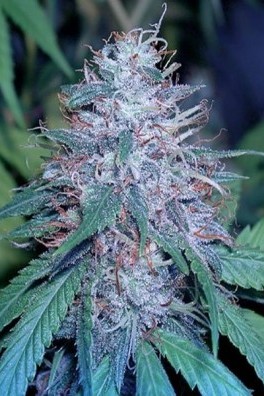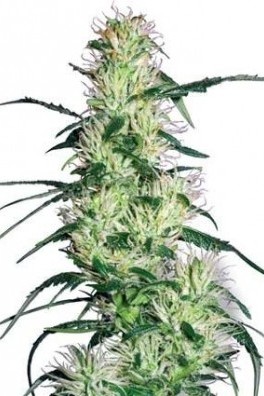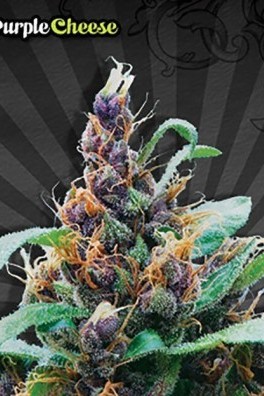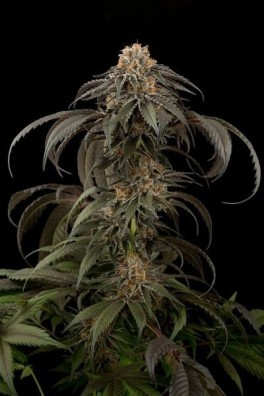Why do some cannabis plants turn blue/purple?
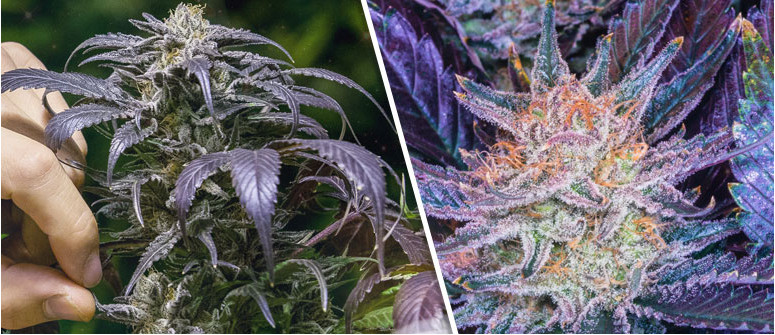
Ever wondered what makes some cannabis plants turn blue/purple? Click here to find out at the truth behind strains like Blueberry and Purple Haze.
Everyone remembers their first batch of purple weed. Whether you were hit with rich, all-blue/purple buds or regular green nuggets with subtle purple hues, we guarantee that your first encounter with a differently colored strain was truly special.
But what exactly is it that makes some cannabis plants turn blue/purple? Are there any ways in which growers can purposefully influence plants to take on blue/purple notes?
WHAT CAUSES CANNABIS PLANTS TO TURN BLUE/PURPLE
In order for a plant to turn blue/purple, it needs to contain high concentrations of anthocyanins.
Anthocyanins are a group of roughly 400 water-soluble pigments which, according to the pH levels a plant is exposed to, will turn red, purple, or blue.
Anthocyanins are present in a variety of plants and fruits, including cannabis, blueberries, eggplants, red cabbage, concord grapes, and violets. They are also responsible for the colour change in autumn leaves.
They serve two main purposes. Firstly, they can help plants attract pollinators to different parts of the plant (such as bees, hummingbirds, and butterflies) while also deterring some insects by tricking them into thinking that the plant is unhealthy.
Secondly, anthocyanins help to protect a plant’s photosynthetic tissue from extreme light conditions.
The genetics of your plant and your grow environment are the two main factors that influence whether your cannabis plants turn blue/purple or not.
HOW GENETICS AFFECT A CANNABIS PLANT’S COLOUR
In order for your plants to turn blue/purple, they need to have the right genetics.
Ideally, you’ll want to look for plants that come from parents with high concentrations of anthocyanins.
If you’re keen on growing blue/purple pot, we suggest at picking hybrid strains that come from blue/purple parents. Some of the most famous blue/purple strains include Blueberry, Purple Haze, Grandaddy Purple, and Purple Urkle.
Using a strain with genetics from any of these varieties is a good start if you’re looking to grow some blue/purple weed at home.
ENVIRONMENTAL FACTORS THAT HELP WEED TURN BLUE/PURPLE
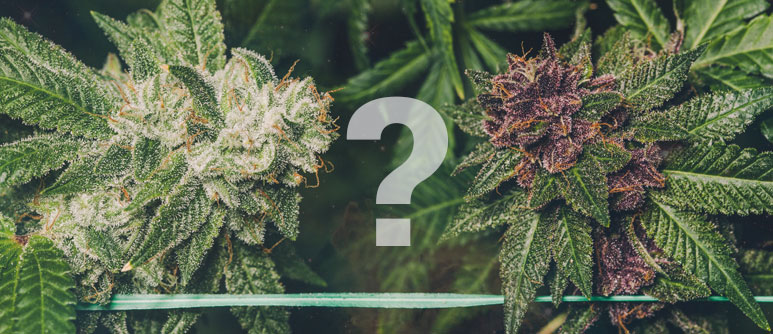
Another major factor that influences your plants’ chances of turning blue/purple is your grow environment.
Once you’ve picked a strain with blue/purple genetics, you’ll want to make sure to keep a close eye on the pH levels of your soil.
A 2006 study in the Pakistan Journal of Nutrition found that anthocyanins in plants tend to die off when exposed to higher pH levels.[1]
Hence, you’ll want to keep your pH levels neutral or slightly acidic for the best chances of seeing your plants turn blue/purple.
Alternatively, you may try exposing your plants to lower temperatures. Cold conditions usually causes plants to momentarily pause their production of chlorophyll (the green pigments in plants). This naturally occurs around autumn/fall, causing the leaves of many trees to turn red or orange.
The ideal growing temperature for cannabis plants is between 22-25°C. Your plants are comfortably able to continue photosynthesizing at temperatures as low as 15°C, but it is recommended to keep your grow room at over 20°C.
To increase the possibility of your plants turning blue/purple, we suggest dropping your grow room temperature at night time. When your plants enter their flowering stage, try to drop your grow room temperatures to roughly 10°C over night.
Do this every night during the flowering stage while keeping a close eye on the overall health of your plants. If your plants start to show signs of damage, ditch the blue/purple idea and quickly get the temperatures back to their their normal levels.
OXYGEN STARVATION
There is a relatively popular theory circulating grow forums that slowly starving your plants of oxygen helps them turn blue/purple. We do not recommend trying this.
Any methods calling you to deprive your plants of oxygen, carbon dioxide, or nitrogen will not affect the colour of your plant. Instead, they’ll just put you at risk of ruining your harvest.
PHOSPHORUS DEFICIENCIES
It’s important to know that plants can also display reddening or purpling leaves/stems. Signs usually start to show themselves in the lower branches and stems of the plant and gradually work their way up the plant.
Phosphorus is one of the key nutrients needed for healthy plants. If you’re plants are showing sign of a phosphorus deficiency, it's important you check your soil concentrations immediately and, if phosphorus levels are low, start supplementing immediately.
Most synthetic fertilizers made for the flowering stage are rich in phosphorus. Alternatively, you can use organic matter such as worm castings, bat guano, bone and blood meal and crab shells.
.jpg)
.jpg)

.jpg)


